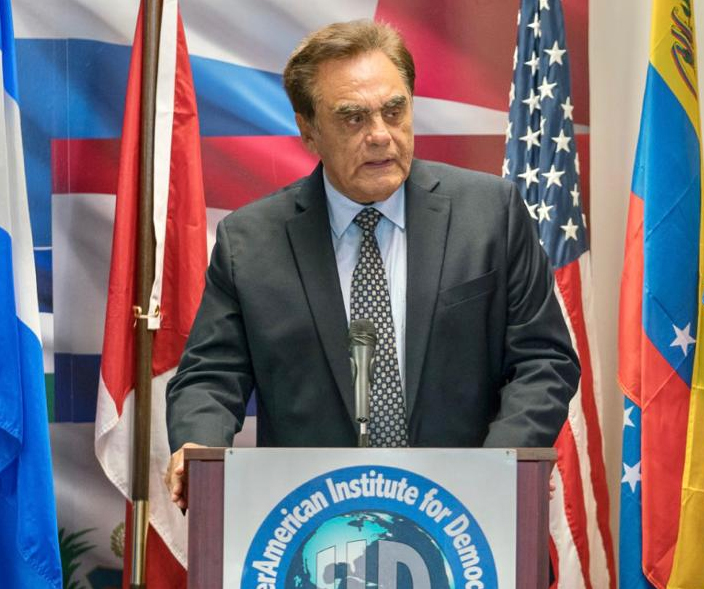The atomic bomb

By: Luis Gonzales Posada - 30/10/2025
Share:
The Japanese organization Nihon Hidankyo, winner of the 2024 Nobel Peace Prize, comprised of survivors of the atomic bombings of Hiroshima and Nagasaki that killed 150,000 people, published a statement demanding a world free of nuclear weapons. Their dramatic testimonies serve as a stark warning against a repeat of the horrific events of 1945.
In that context, I remember Manuel Seoane, leader of the APRA, director of the newspaper "La Tribuna", who in 1960 published an impactful book entitled "The Six Dimensions of the World Revolution".
In that work, he warns about the devastating consequences that the use of atomic bombs would have for humanity and quotes Louis Redenour, a physics professor at the University of Pennsylvania, who said that "our defenses against nuclear weapons are equivalent to the Roman army, armed with spears, javelins and breastplates, fighting against a modern army, armed with machine guns."
Another leading figure, Harold Urey, Nobel Prize winner in Chemistry, argued that "a future war will differ from the last one, as a horse differs from a locomotive."
For his part, the American analyst, Hanson Baldwin, pointed out that "today, in the atomic age, the destructive capacity of nuclear weapons is so inconceivably devastating that we are living in the Age of Big Bangs."
In that context, Seoane stated that "the hydrogen bomb is a thousand times more powerful than those dropped on Japanese cities" and Linus Pauling, also a Nobel laureate in Chemistry, asserted that "the United States government has a stockpile of 100,000 nuclear bombs and the Soviet Union another of 50,000, and with 300 of these devices one can destroy the other nation."
Reflecting on this topic, Dean Achenson, US Secretary of State under President Harry Truman (1949-1953), warned that "it is estimated that a 30-hour attack would destroy one-third of the United States. The reverse is also true, that is, the destruction of Russian cities with American bombs," adding that the US "has nearly 5,000 aircraft capable of carrying nuclear weapons with a yield of one megaton; equivalent to one million tons of TNT. A megaton bomb," the scientist added, "has a destruction area of 30 to 60 miles, which, with several bombs, can extend to 300 miles. The area of Moscow is only 125 square miles. The United States today has a theoretical capacity to destroy the Soviet capital forty or fifty times greater than necessary, even discounting combat losses and enemy defenses."
Later in the aforementioned book, Seoane reveals that US General James M. Gavin presented a disturbing report to the Senate committee stating that "if the strategic air force attacks Russia with its full power, dropping nuclear bombs, there will be several hundred million deaths. If the wind blows southwest, the radiation could cause more casualties, perhaps as far as Japan and the Philippines, and if it blows west, the damage could rebound on Europe."
Sixty-five years have passed since the dramatic but realistic warnings made by the Peruvian politician, who, if he lived in these turbulent times, where a bloody war has been raging for almost four years between Russia and Ukraine and a conflict between Israel and Palestine, would say that the consequences of using those devices would be more catastrophic, because now the nuclear arsenal is not only possessed by Russians and Americans but also by France, China, Israel, India, Pakistan, England and North Korea, which together have 12,200 warheads, much more powerful than those detonated in 1945.
Against this grim backdrop, US President Donald Trump announces that his administration will invest $100 billion in nuclear weapons and fund new classes of submarines with ballistic missiles.
For its part, the Russian news agency TASS reports that its country has nuclear torpedoes called "Poseidon" capable of causing tsunamis 300 meters high that would devastate the British coast, causing millions of deaths, and recently Putin announced that they had tested a nuclear-capable underwater drone.
The world is on the brink of catastrophe considering that Russia has 5,580 warheads; the USA, 5,225; China, 600; France, 290; the United Kingdom, 225; India, 172; Pakistan, 179; Israel, 90 and North Korea, 50: enough material to destroy humanity, to end life on Earth.
«The opinions published herein are the sole responsibility of its author».